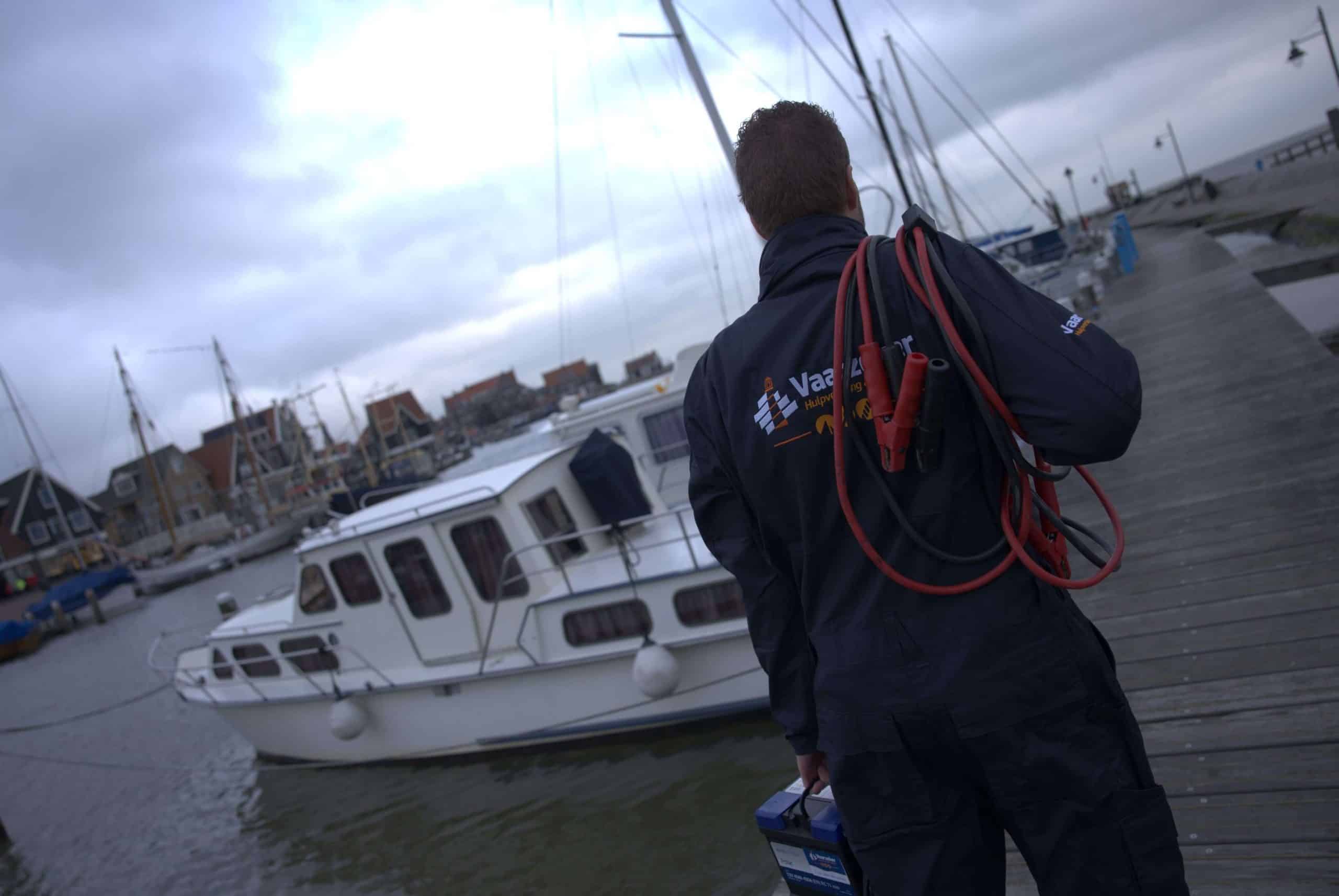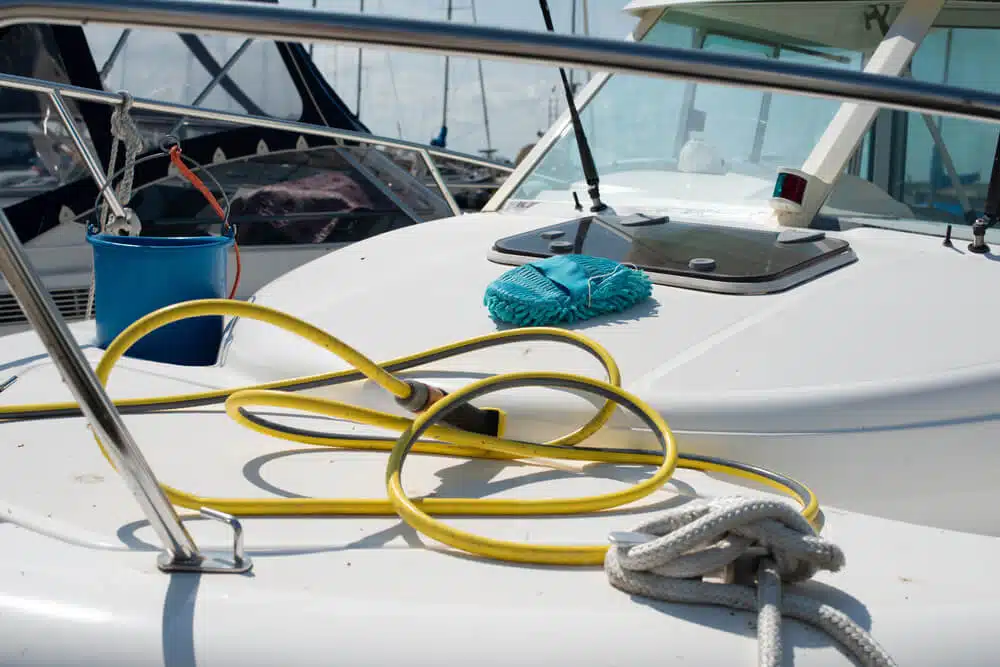- Blog
- August 29, 2025
Water tank of boat cleaning - Do it this way
The cleaning the water tank of your boat you can easily do yourself by first draining the tank, then adding a suitable cleaner such as chlorine or citric acid, letting it soak for a few hours and then rinsing thoroughly. Want more information about cleaning your water tank on the boat? Then be sure to read on for a practical step-by-step plan and eco-friendly options.
Summary in Brief:
- You prevent biofilm, odor and health risks with periodic cleaning
- Both chlorine and natural remedies are effective when used properly
- You can easily do this yourself or opt for a maintenance service
Why is cleaning your boat tank so important?
Your drinking water tank may seem clean, but that is often appearances. In stagnant water, biofilm and bacteria develop within a few days. Think musty odors, deposits or even health problems. Especially if you have children on board or sail for long periods of time, you don't want to take any risks. The timely cleaning of your water tank on the boat prevents all these problems.
What are the consequences of a contaminated water tank?
A dirty water tank can unwittingly lead to more annoying problems than you think. The smell of the water is often the first signal, but your health or equipment can also be damaged. Below you can read about the main risks:
- Reduced taste or odor of drinking water
- Build-up of biofilm and bacteria such as E.coli or legionella
- Blockages in pipes and pumps
- Damage to your water tank system due to corrosion or contamination
How can you clean your water tank boat?
Cleaning your water tank on the boat should ideally be done twice a year: at the start of the season and when you winterize. You can easily perform this process yourself with a few basic tools and some patience. Follow the following steps when cleaning the tank:
- First drain all the old water and rinse the tank with clean tap water
- Add a cleaning agent (chlorine, citric acid or hydrogen peroxide)
- Allow this mixture to act for at least 12 hours, depending on the product
- Then flush at least 2 to 3 times with fresh water
- Also check pipes, faucets and filters for residue or blockages
What is best to use for cleaning?
There are many different opinions on what is the best cleaner for your water tank. You have a choice between chemical cleaners such as chlorine and natural alternatives. What you choose depends on your preferences, boating style and ecological beliefs. Below are the most commonly used options:
- Chlorine solution is effective and inexpensive, but proper rinsing is crucial
- Citric acid is environmentally friendly and neutralizes odor, slightly milder
- Hydrogen peroxide kills bacteria, safe when used correctly
- Ecological ready-to-use cleaners are biodegradable and easy to use
How do you prevent biofilm formation in your water tank?
Prevention is better than cure. Biofilm forms especially in old tanks or during prolonged downtime. By taking a few smart measures, you can keep your tank clean and fresh for longer. This way, you minimize the need for heavy cleaning. Prevent biofilm by:
- Flush the tank after each extended boating period
- Do not leave the tank half-full for long periods of time
- Use an activated carbon filter or UV filter for better water quality
- Preemptively add a light dose of hydrogen peroxide for prolonged use
What are eco-friendly ways to clean your water tank?
If sustainability is important to you, there are plenty of options for cleaning your water tank without harming the environment or your health. More and more products are ecologically sound and effective. Some popular choices include:
- Citrus or enzyme-based biodegradable cleaners
- Cleaning kits with refillable containers to reduce waste
- Use of rainwater with pre-filtration to prevent pollution
- Cleaning schedules that reduce wasted water
Can you also have this done by a specialist?
For those who have little time or are less mobile, a professional service may be the answer. There are maintenance companies that will thoroughly clean your water tank, check for wear and tear and check your entire system. Especially for larger yachts or older boats, this is a reassuring option. Check with your marina for reliable providers or get an annual reminder through a service plan.
When are you done cleaning your water tank boat?
You are done when the water is clear, smells neutral and there is no residue from cleaning agents. Usually you will notice an immediate difference in the taste and smell of the water. Repeat this cleaning at least annually, and ideally every six months. That way, you'll always sail on the water with peace of mind.
Can't figure it out? At Vaarzeker, we can help you from the shore. Check out our subscriptions, so you know what help we can provide during your days on the water. Do you have any questions about our assistance service? Feel free to contact with us. We will be happy to help you.
Need help choosing?
Need help choosing a subscription? Then use our handy selection guide.
Recent news/blog posts

Need towing service for your boat? - Here's what you need to know!
- Blog
- September 30, 2025

Newsletter subscription
Fill out the form below to become a member of our newsletter
